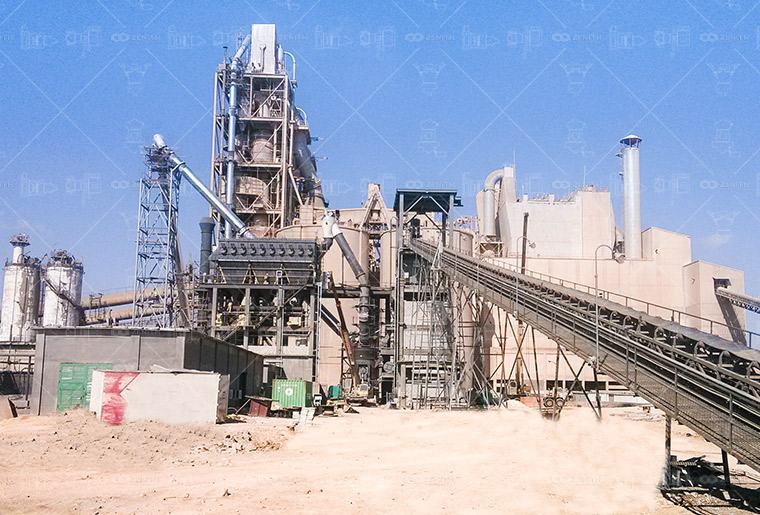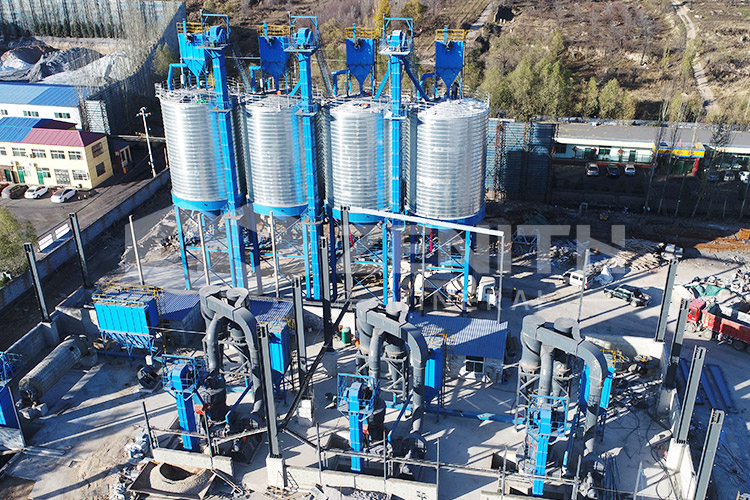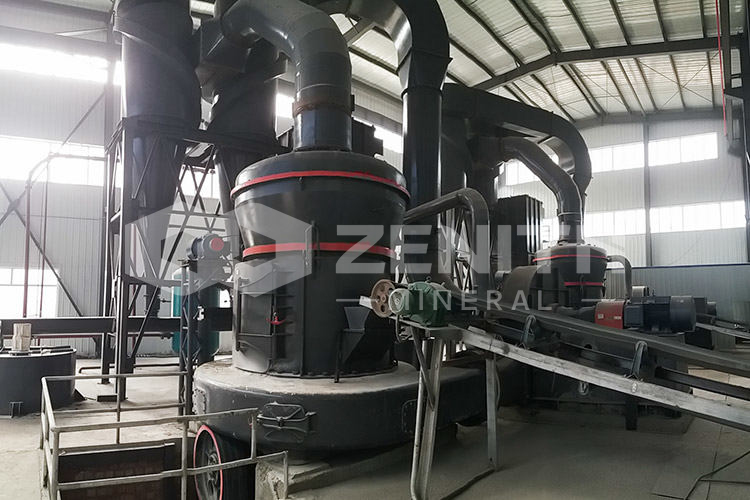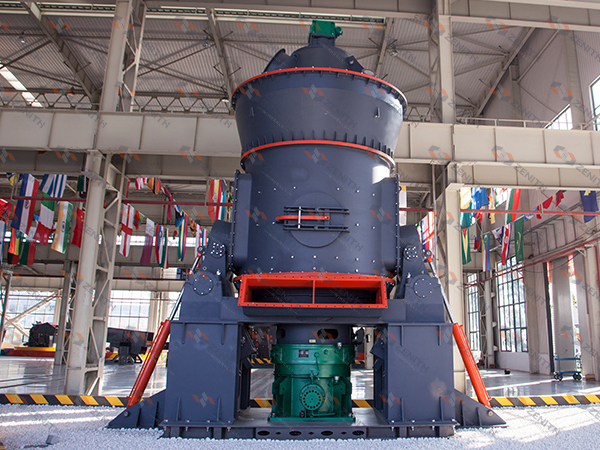Vertical coal mill for industrial boiler pulverized coal preparation project
2025-11-08 09:27:44
In the realm of industrial boiler operations, the efficiency and reliability of pulverized coal preparation are paramount. The selection of grinding equipment directly impacts fuel quality, combustion efficiency, and overall operational costs. For projects requiring consistent, high-volume pulverized coal production, the Vertical Coal Mill, specifically models like the LM Vertical Grinding Mill from Zenith, presents a superior technological solution.
Zenith Machinery, with its extensive research and development capabilities, has engineered vertical roller mills that excel in the demanding environment of coal grinding for industrial boilers. These mills are designed not just to grind, but to optimize the entire preparation process, ensuring that the pulverized coal meets the stringent specifications required for efficient combustion.

Why a Vertical Mill for Coal?
The fundamental design of a vertical roller mill (VRM) offers distinct advantages for coal pulverization. Unlike traditional ball mills, the LM Vertical Grinding Mill utilizes a bed-compression grinding principle. Material is fed onto a rotating grinding table and is crushed by hydraulically-loaded rollers. This method is inherently more efficient for brittle materials like coal, as it focuses pressure on the material bed rather than relying on impact and attrition alone.
For industrial boiler projects, this translates to a coal powder with a consistent and controllable particle size distribution. A uniform fineness, typically targeting 80-90% passing 200 mesh (74 microns), is critical for complete combustion, minimizing unburned carbon and reducing slagging in the boiler. The LM mill's integrated dynamic classifier allows for precise control over this fineness, even as grindability and feed characteristics fluctuate.
Key Project Benefits of the LM Vertical Grinding Mill
When integrating a Zenith LM Vertical Grinding Mill into a pulverized coal preparation system, project managers can expect several tangible benefits:
- Substantial Energy Savings: The VRM's grinding mechanism consumes 30% to 50% less energy than a ball mill of equivalent capacity. In a continuous operation like an industrial boiler plant, this reduction in power consumption constitutes a major operational cost saving.
- High Availability and Continuous Operation: Designed for 24/7 operation, the LM mill boasts high reliability. Its robust construction and automated control systems minimize unplanned downtime, a critical factor for boiler plants that cannot afford interruptions in fuel supply.
- Compact Footprint and Lower Investment: The mill's vertical arrangement and integrated system design result in a footprint approximately 50-70% smaller than a ball mill system. This saves significant space in the plant layout and reduces the cost of civil works and foundations.
_1762565264781.jpg)
The working principle is both efficient and elegant. The main motor drives the grinding disc via a reducer. Coal, fed to the center of the disc, is thrown outward by centrifugal force under the rollers. The material is ground by the rollers' pressure, and the resulting powder is transported by a hot gas stream (often pre-heated air from the boiler system itself) to the top-mounted classifier. Oversized particles are rejected and fall back to the grinding table, while the fine, qualified powder is carried to the cyclone collectors and baghouse filter. This closed-loop system ensures maximum yield and minimal waste.
Meeting Environmental and Operational Standards
Modern industrial projects must adhere to strict environmental regulations. The LM Vertical Grinding Mill is designed with this in mind. The entire grinding process occurs under negative pressure, preventing the escape of coal dust—a significant safety and environmental hazard. Furthermore, the mill is equipped with a high-efficiency pulse jet bag filter that ensures exhaust gas emissions are well within permissible limits.
Operational flexibility is another key advantage. The mill can handle a wide range of coal types, from bituminous to sub-bituminous, and can accommodate variations in moisture content. The integrated hot gas system can effectively dry coal with moisture contents up to 15% during the grinding process, eliminating the need for a separate, energy-intensive drying step.

In conclusion, for any industrial boiler project where fuel cost, combustion efficiency, and operational reliability are priorities, the Zenith LM Vertical Grinding Mill offers a proven, high-performance solution. Its energy efficiency, low maintenance requirements, and environmental compliance make it an intelligent long-term investment for modern, sustainable industrial operations.
Frequently Asked Questions (FAQs)
- What is the typical fineness range achievable for pulverized coal with the LM Vertical Mill?
The LM Vertical Mill can reliably produce pulverized coal in the range of 80 to 400 mesh (approximately 180 to 38 microns), which is the standard fineness required for most industrial boiler applications to ensure optimal combustion. - How does the energy consumption of a vertical mill compare to a traditional ball mill for coal grinding?
The LM Vertical Grinding Mill typically consumes 30% to 50% less energy than a ball mill of equivalent capacity and output fineness, leading to significant operational cost savings. - Can the mill handle high-moisture coal, and is a separate dryer needed?
The mill features an integrated hot air system that can simultaneously dry and grind coal with moisture contents up to 15%, often eliminating the need for a separate, standalone dryer unit. - What is the operational noise level of the LM Vertical Grinding Mill?
Due to its enclosed design and grinding mechanism, the mill operates at a relatively low noise level, typically below 80 dB, contributing to a better working environment. - How is the grinding fineness adjusted during operation?
Fineness is precisely controlled by adjusting the speed of the integrated dynamic classifier rotor, which can be done easily from the control panel without stopping the mill. - What is the expected service life of the grinding rollers and table?
The grinding rollers and table are made from high-chromium cast iron or similar wear-resistant alloys, offering a long service life. Specific lifespan depends on coal abrasiveness but typically ranges from 6,000 to 10,000 operating hours. - Is the system automated, and what level of manual oversight is required?
The mill is equipped with a comprehensive automatic control system that manages feeding, grinding, and classifying. It allows for remote monitoring and control, requiring minimal manual intervention during normal operation.








